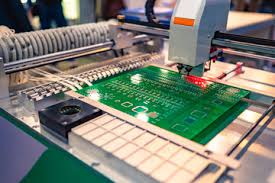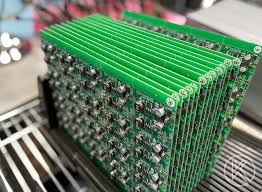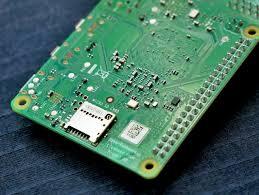Content Menu
● Understanding Surface Mount Technology
● Key Benefits of Surface Mount Technology
● The SMT Process
● How SMT Improves Manufacturing Efficiency
>> Streamlined Production Processes
>> Flexibility in Design
>> Lower Defect Rates
>> Enhanced Supply Chain Management
>> Environmental Benefits
● Conclusion
● Related Questions
>> 1. What are the main advantages of Surface Mount Technology?
>> 2. How does SMT compare to traditional through-hole technology?
>> 3. What steps are involved in the SMT process?
>> 4. How does automation impact SMT manufacturing?
>> 5. What environmental benefits does SMT provide?
Surface Mount Technology (SMT) has transformed the landscape of electronics manufacturing, offering numerous benefits that enhance efficiency, reduce costs, and improve product quality. This article delves into how SMT improves manufacturing efficiency, exploring its advantages, processes, and implications for the electronics industry.

Understanding Surface Mount Technology
Surface Mount Technology is a method of mounting electronic components directly onto the surface of printed circuit boards (PCBs). Unlike traditional through-hole technology, where components are inserted into holes drilled in the PCB, SMT allows for a more compact design and higher component density. This shift has been pivotal in the evolution of modern electronics, enabling the production of smaller, lighter, and more efficient devices.
Key Benefits of Surface Mount Technology
1. Increased Component Density: SMT allows for a higher density of components on a PCB, which is crucial for modern electronic devices that require miniaturization. This increased density not only saves space but also enhances the performance of the device by reducing the length of electrical connections.
2. Reduced Manufacturing Costs: By minimizing the size of components and the space required on the PCB, SMT reduces material costs. Additionally, the automated processes associated with SMT lead to lower labor costs and faster production times.
3. Improved Reliability: SMT components are generally more reliable than their through-hole counterparts. The solder joints formed during the SMT process are less prone to mechanical stress and environmental factors, leading to longer-lasting products.
4. Enhanced Performance: The shorter electrical paths in SMT designs reduce signal loss and improve overall performance. This is particularly important in high-frequency applications where signal integrity is critical.
5. Automation Compatibility: SMT is highly compatible with automated assembly processes, which significantly increases production speed and consistency. Automated pick-and-place machines can quickly and accurately position components on the PCB, followed by reflow soldering to secure them in place.
The SMT Process
The SMT process involves several key steps that contribute to its efficiency:
1. Design and Preparation: The first step is designing the PCB layout to accommodate SMT components. This includes selecting appropriate components and ensuring that the design adheres to manufacturing guidelines.
2. Solder Paste Application: Solder paste is applied to the PCB using a stencil. This paste is crucial for creating the solder joints that will connect the components to the board.
3. Component Placement: Automated pick-and-place machines position the SMT components onto the solder paste. This step is critical for ensuring accuracy and speed in the assembly process.
4. Reflow Soldering: The assembled PCB is then heated in a reflow oven, where the solder paste melts and forms solid connections between the components and the PCB.
5. Inspection and Testing: After soldering, the PCBs undergo inspection and testing to ensure that all components are correctly placed and functioning as intended.
How SMT Improves Manufacturing Efficiency
Streamlined Production Processes
SMT streamlines production by integrating multiple steps into a single automated process. The use of automated machinery reduces the need for manual labor, which not only speeds up production but also minimizes human error. This efficiency is particularly beneficial in high-volume manufacturing environments where consistency and speed are paramount.

Flexibility in Design
The flexibility of SMT allows manufacturers to easily adapt to changing market demands. With the ability to quickly modify designs and switch between different component types, manufacturers can respond to customer needs without significant downtime or retooling costs.
Lower Defect Rates
The precision of automated SMT processes leads to lower defect rates compared to manual assembly methods. Automated inspection systems can quickly identify defects, allowing for immediate corrections and reducing waste.
Enhanced Supply Chain Management
SMT facilitates better supply chain management by allowing for just-in-time manufacturing. With smaller components and reduced lead times, manufacturers can maintain lower inventory levels while still meeting production demands.
Environmental Benefits
By reducing the size of components and the amount of material used, SMT contributes to more sustainable manufacturing practices. Smaller devices require less energy to produce and operate, aligning with global efforts to reduce environmental impact.
Conclusion
Surface Mount Technology has revolutionized the electronics manufacturing industry by improving efficiency, reducing costs, and enhancing product reliability. Its ability to accommodate high-density designs and integrate seamlessly with automated processes makes it an essential component of modern manufacturing. As technology continues to evolve, the benefits of SMT will likely expand, further solidifying its role in the future of electronics.

Related Questions
1. What are the main advantages of Surface Mount Technology?
Surface Mount Technology offers advantages such as increased component density, reduced manufacturing costs, improved reliability, enhanced performance, and compatibility with automated assembly processes.
2. How does SMT compare to traditional through-hole technology?
SMT allows for a more compact design and higher component density, while through-hole technology is generally bulkier and less efficient for modern electronic devices.
3. What steps are involved in the SMT process?
The SMT process includes design and preparation, solder paste application, component placement, reflow soldering, and inspection and testing.
4. How does automation impact SMT manufacturing?
Automation significantly increases production speed and consistency, reduces labor costs, and minimizes human error in the assembly process.
5. What environmental benefits does SMT provide?
SMT reduces material usage and energy consumption, contributing to more sustainable manufacturing practices and lower environmental impact.




















